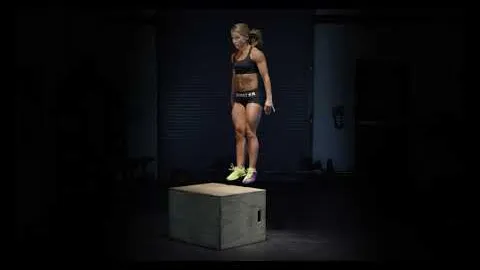
If you're looking to improve your vertical jump, agility, and overall athletic performance, the bounding box jump exercise is a must-try. This plyometric exercise not only helps to develop explosive power in your lower body but also enhances your balance and coordination. In this guide, we will walk you through the proper technique, benefits, variations, and safety tips for the bounding box jump exercise.
The bounding box jump exercise is a plyometric movement that involves bounding laterally or vertically onto a raised platform, such as a box or step. The exercise mimics explosive movements required in various sports activities, making it an excellent choice for athletes seeking to enhance their performance on the field or court.
To execute the bounding box jump exercise correctly, follow these steps:
Increased Vertical Jump: By focusing on explosive jumps and landing techniques, the bounding box jump exercise helps to improve your vertical leap. This can be particularly beneficial for sports such as basketball, volleyball, and track and field events that require explosive jumping abilities.
Enhanced Agility and Coordination: The bounding box jump exercise challenges your body to coordinate movements in a dynamic and explosive manner. It enhances your proprioception, balance, and overall agility, which are crucial for sports that involve quick changes in direction and body positioning.
Lower Body Strength Development: This exercise primarily targets the muscles in your lower body, including the quads, glutes, hamstrings, and calves. As you continually perform bounding box jumps, these muscles get stronger, leading to improved overall lower body strength.
Increased Power Output: Performing plyometric exercises like the bounding box jump enhances power output, which translates to greater speed and overall athletic performance.
Here are a few variations to consider once you have mastered the basic bounding box jump exercise:
This variation adds an extra challenge by performing the exercise on a single leg. Start with a lower box height and gradually increase the height as your strength and balance improve. Alternate legs for equal development.
Instead of jumping forward and back, perform lateral jumps onto the box. This variation targets the muscles responsible for lateral movement and improves lateral explosiveness.
In the depth box jump, start from an elevated platform and jump down to a lower surface or box. This variation trains your muscles to absorb force and improves your ability to control landings, which can be highly beneficial in preventing injuries.
To ensure a safe and effective workout, keep the following tips in mind:
Start with an Appropriate Box Height: Begin with a lower box height and gradually increase it as you gain strength and confidence.
Focus on Proper Landing Mechanics: Always aim to land soft and with control. This helps to minimize the impact on your joints and reduce the risk of injury. Keep your knees slightly bent upon landing and ensure that your weight is evenly distributed.
Progress Gradually: As with any plyometric exercise, it's crucial to progress gradually. Start with a lower number of repetitions and gradually increase the intensity and volume of your workouts over time.
Listen to Your Body: If you experience any pain or discomfort during the exercise, stop immediately. Consult a healthcare professional if necessary.
Incorporating the bounding box jump exercise into your training routine can help take your athletic performance to new heights. Remember to focus on proper form, start at an appropriate difficulty level, and gradually progress as your strength and skills improve. By doing so, you'll enhance your vertical leap, agility, and overall athletic abilities, giving yourself a competitive edge in your chosen sport.
If you're looking for a gym, fitness club or yoga studio, you've come to the right place.
You can find information about gyms in your area. Browse catalog of gyms and find gyms with classes which are you looking for.
On gym page you can find simple information like address, phone or website. You can find list of available classes. You can check availability of personal training or small group classes. On place page you can also see information about open hours.
You can find gyms near you with amenities, courts, studios and equipments.
Use our map to find gym at your city or district.
In Gym Navigator you can find list of exercises with movies for many body parts.
You can browse exercises catalog and find exercises the best of you.
You can also find exercises grouped into workout plans, which you can use to improve you body. Each routine show you exercises one by one and give you possibility to count you progress and count down rest time.